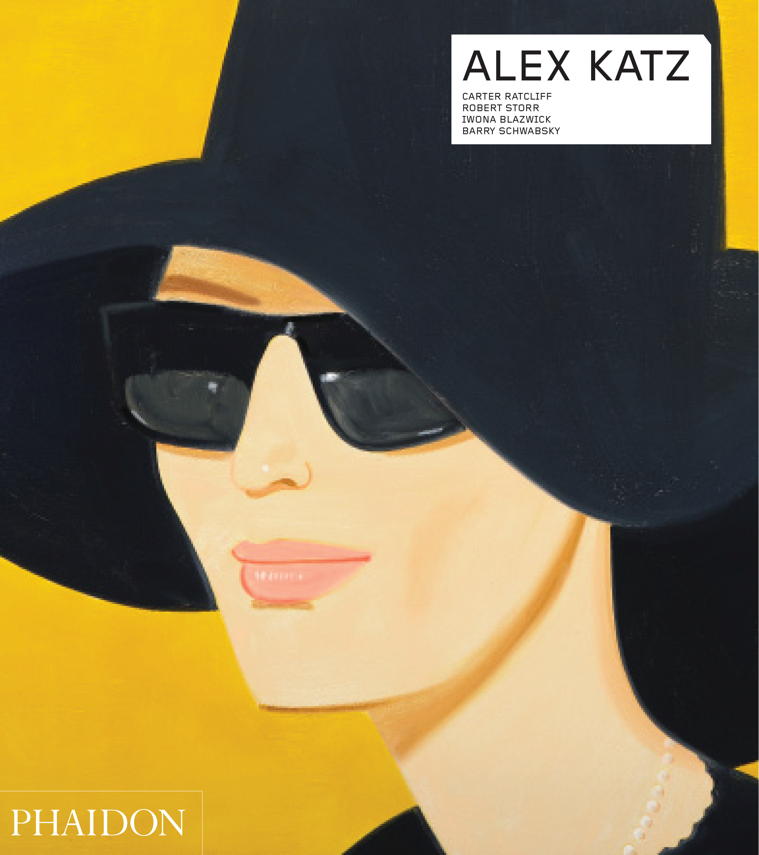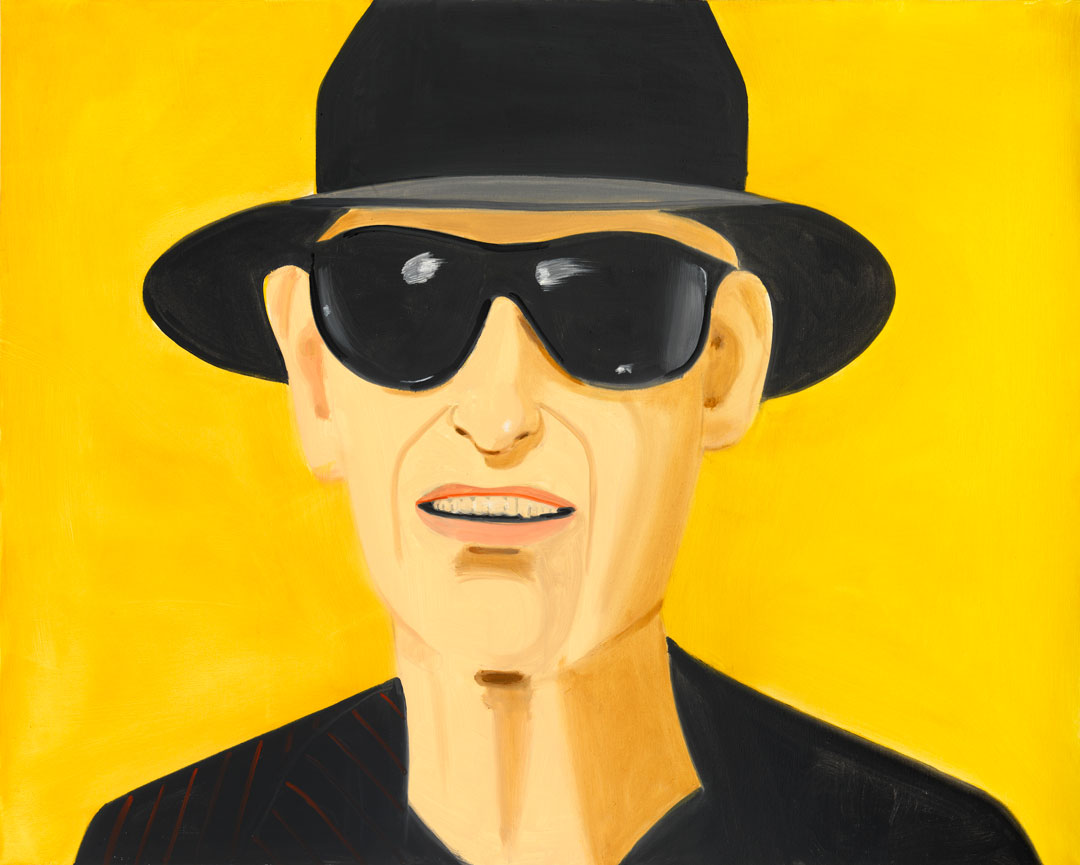
Alex Katz - 'I never had any self-confidence until I was 30'
We asked the painter about his days at Cooper Union, the jazz clubs he went to at night and why painting is like running a 4.40, when we bumped into him at his show of new work and Forties drawings at Timothy Taylor
We’ve loved and admired the work of Alex Katz for a long time now so we were happy to bump into him while checking out some of his new paintings, sculptures and a show of his 1940's ‘Subway Drawings at Timothy Taylor, London a couple of weeks ago. The drawings were made by Katz during his time as an art student at Cooper Union, when he used his time in transit on the subway to study individual figures and groups, developing his signature clarity of line.
The drawings seem to bridge the gap between the eager Queens boy he was, learning to be an artist and getting schooled in the rules of modernism, and the slick painter who rejected the fashion of the time for abstract expressionism. Here he is to tell us a bit more.
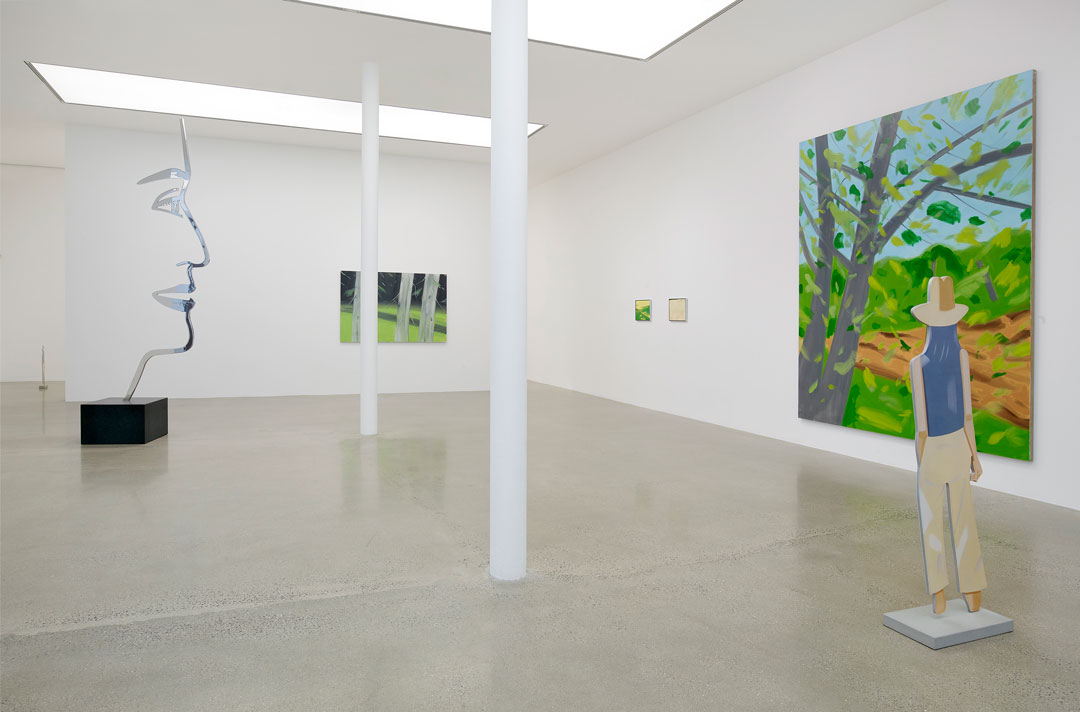
Let’s start by asking how you start. With a cartoon and a big brush stroke. By the time I get to the physical painting I’ve done the sketches, it’s a big cartoon, the colours are all premixed and the layering is all figured out.
How do you keep it going, keep perspective? You paint big so that with one brush stroke you can get thirteen tones. You get all these tones in just one single stroke. When I paint I have to sometimes retreat 100 feet to get focus on the finished thing. One of these new ones was like that, it drove me nuts! When I’m painting I feel like I’m behind myself.
What happens when you’re about halfway through? You go as far as you can and then it wobbles a bit and you walk away. And you think you better not go any further. It’s a little like running a four forty. Everything’s OK and then all of a sudden you’re in shock. You go through the shock and then you figure it out.
What’s your ritual? Usually there’s a cartoon on the canvas, the colours are premixed, the brushes are laid out. When the sequence is right I figure out the time to paint. If I’ve put the drawing on on Wednesday maybe I might paint on the Friday. In between I’m not in it.

Do you know straight away if it’s going to go well? You know with the first stroke if the paint is right. Because the paint varies – some days it's easy and other days it’s awful. The canvases are a mixed bunch. If they’ve hung around they don’t take the paint the same as if it’s a fresh canvas. And the paint mix might be wrong. I have a 12ft high painting in Gavin Brown where the paint was mixed too loose and it started to spray all over the whole painting. I had them all mix the colour again on the palette like tar and I got away with it - but it wasn’t a lovely ride.
Do you ever about leaving space for people to impose themselves somewhere in the picture? No. They’re image paintings. You can only think about the image. The image gives you lots to think about if you’re interested but the rest of it is just power. When I was a young painter I saw a de Kooning show and thought, ‘Wow these are tough. I wanna make something that’s gonna knock it off the wall.
I’ve always felt a little mousey temperamentally So I’ve wanted to make something a little muscular. You put my paintings next to anybody’s and they’re gonna hold up. Every so often you get one that doesn’t reach a top level.

Do you destroy them then? Smash them up? No, no, I sell ‘em. They’re perfectly good paintings. But they haven’t got that real edge to them. Every year I got one or two that are out of the park. You paint fifty and you get two that are out of the park. I just say to Gavin Brown, ‘It’s out of the park, come over!’
You’re famous for your paintings of women but which women painters do you admire? Marlene Dumas. I think Marlene’s social hostility is just terrific and technically the paintings are beautiful. There's so much that is engaging and novel and she’s getting better. The last show is better than the show before. She’s a terrific painter. The energy basically is what I like. It shows itself in different ways and it’s usually a case of content rather than technique for me.
Tell us about the drawings on show here at Timothy Taylor. I was trying to learn how to draw real quick so I wouldn’t get thrown out of school! I’d go to jazz clubs at night and draw on the subway. I was drawing around the clock. I was going to a lot of jazz in the city. 53rd Street Jimmy Ryans and, later on, The Palladium. I was seeing a lot of Dixieland, Art Tatum. In the Sixties we were hooked onto cool jazz - Stan Getz. All of a sudden there was this guy who did not move. He’d blink. That’s it. People would talk and he’d look at them and walk off. Really snotty!____
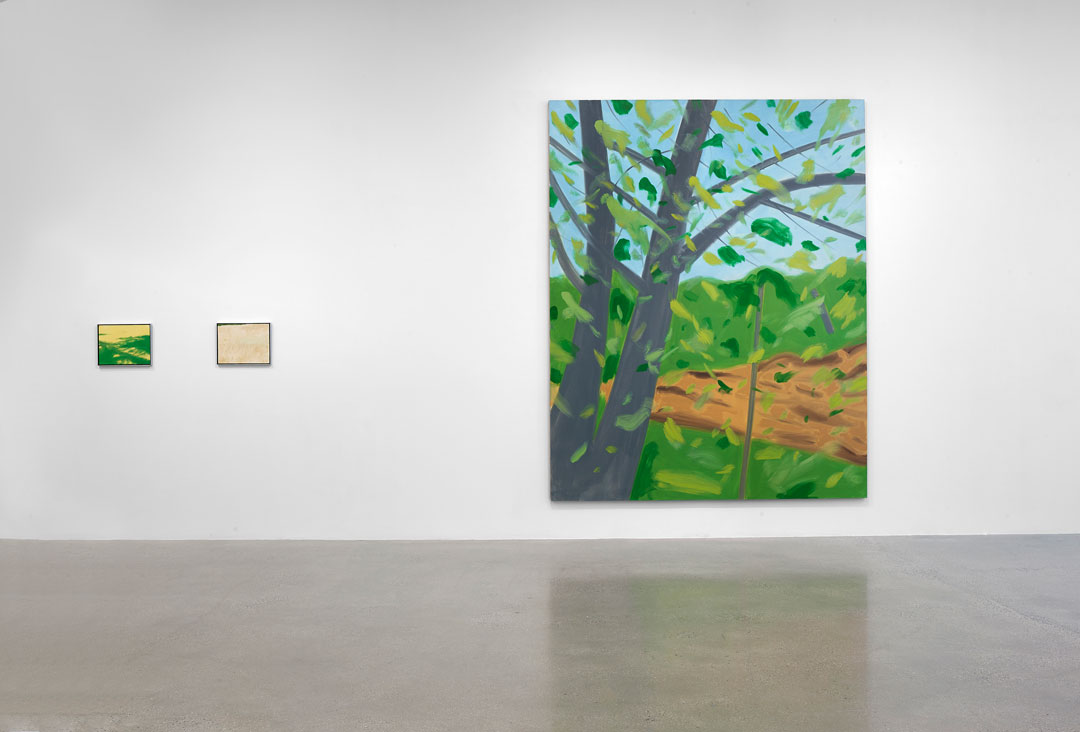
You’re 90 now and act like a 20-year-old! What were you like at 20? I was into jazz and dancing. I was in the Cooper Union, a very advanced modern art school. It was the greatest time of my life being in art school – everything has been down hill ever since! It was such a great time. I gave them a scholarship I had such a great time there.
But I didn’t have any confidence in myself at all. I think I was almost an anomaly where I was. I grew up in Queens and it was all middle class firemen, cops and stuff. And I hung out with jocks. And then there were two artists on the block. Somehow I fit and didn’t fit. I knew when I got into Cooper Union that I felt connected. I could feel it. But I never felt good about myself, no self-respect, until I was around thirty.
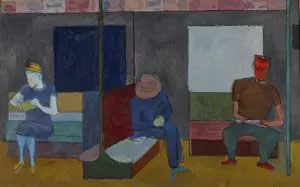
What was Cooper like back then? Cooper was a five per cent school – five per cent get in. It’s like Harvard and it’s harder because it’s all tests. I didn’t have the background for it but I ended up near the top of the 1800 people that took it. Which meant that I had enormous talent for the intellectual part of art - which is true. I knew that and I thought if I can stay in the school for a year-and-a-half if I don’t get thrown out, I’m going to be on top of this place. And that was it. That was the game plan. Not to get too many Cs.
What did you learn there? I learned about modern art. I think some people pick it up faster than others. I was slow and I picked it up from other people. Upper class kids liked me. I was with these upper class people who were ahead of me and I learned a lot from them. When I went out of there I was a professional painter. A school painting of mine was shown in a gallery and the New York Times gave it a review. Wow. The school was hip. But I knew that it was limited. It wasn’t where I was going. The top Cooper kid always got into the Whitney, got into the Modern and got a good teaching job. I didn’t get any of that because I went off in another direction. And I became a real artist.
Check out our Alex Katz Contemporary Artist Series book in the store. It features an illuminating Robert Storr interview with Alex, and critical writings by Iwona Blazwick and Barry Schwabsky. And if you're in London, check out the show at Timothy Taylor.
